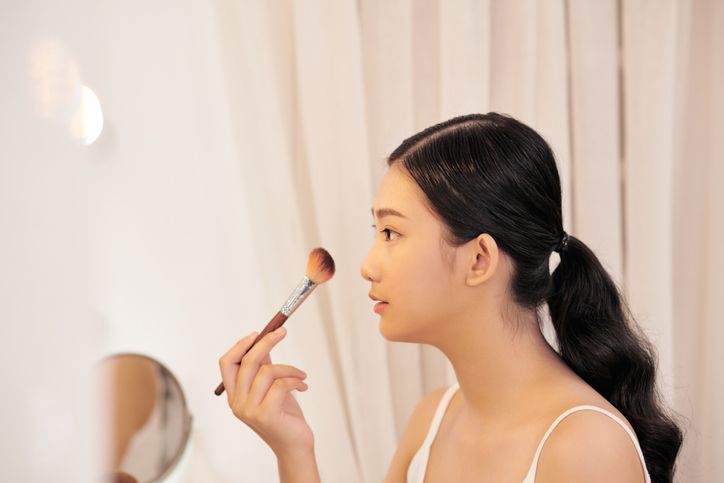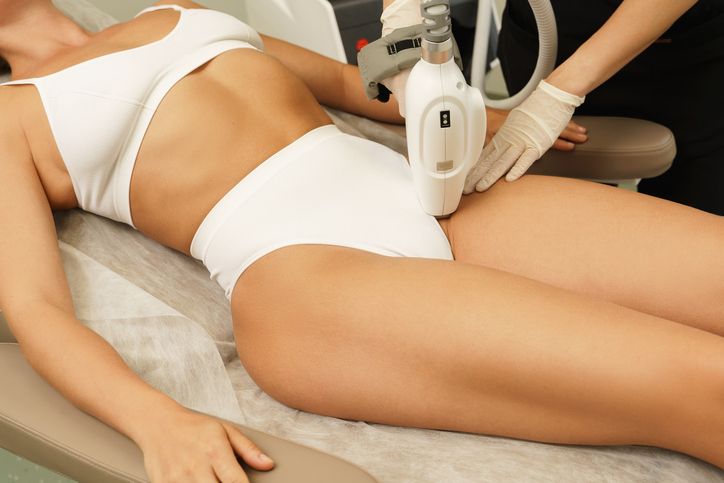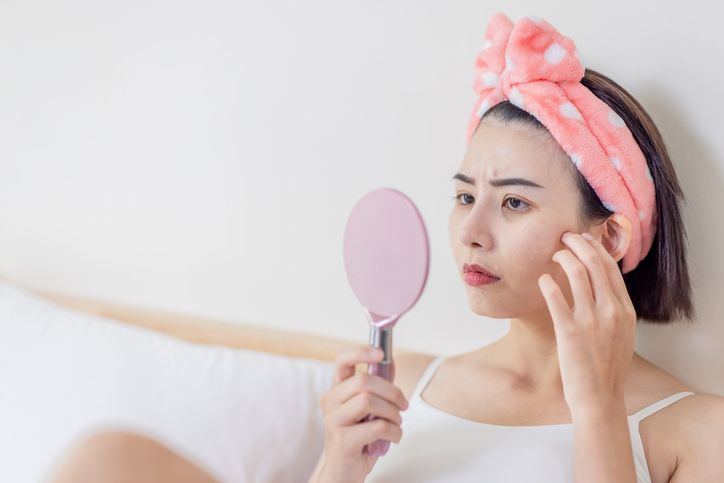- Home
- Trend
- Weight Loss Strategies
- Acne Tips
- Hair Health Information
- Blemish Removal Tips
- Acne Scar Removal Tips
- Muscle Building Techniques
- Intimate Care Tips
- Postpartum Intimate Care
- Eye Bags Wiki
- Tips for Face Slimming
- Secret of Permanent Hair Removal
- Breast Enlargement Tips
- Cure to Snoring
- Marionette Lines
- Skin-Tightening Secrets

免費體驗
R6 Miracle Eye Rescue Treatment
1 Minute Self-Registration
Date should not be before minimal date
Dark circles under the eyes can be a persistent concern, affecting individuals of all ages and skin tones. Whether caused by genetic factors, lifestyle choices, or underlying health issues, the quest to treat and prevent dark circles is a common pursuit, especially in a high stress country like Singapore. Let's delve into effective strategies, lifestyle changes, and medical treatments to address dark undereye circles and regain a refreshed appearance.
1
Root Causes of Having Dark Undereye

Genetics
Genetics plays a significant role in determining the thickness of the skin and the presence of blood vessels around the eyes. If your parents or close relatives have dark under-eye circles, you may be genetically predisposed to them.
Thin Skin
The skin around the eyes is thinner than the skin on the rest of the face, making blood vessels more visible. As a result, any inflammation or discoloration becomes more noticeable, and it may less occur on people with darker skin tones.
Age
Aging can cause a loss of collagen and fat in the under-eye area, making the dark blood vessels beneath the skin and underlying tissues more visible. This can contribute to the appearance of dark circles.
Smoking
Smoking can accelerate the ageing process and contribute to the breakdown of collagen, leading to the development of dark circles.
2
Potential Issues If You Have Dark Eyes Circles

Dark under-eye circles are often a cosmetic concern, but they can sometimes be associated with underlying health issues. Here are some potential health-related causes of dark circles:
Allergies
Allergic reactions can lead to inflammation and swelling, causing the blood vessels under the eyes to become more visible and resulting in dark circles. Those prone to allergies, whether seasonal or triggered by specific foods or environmental factors, may be more susceptible. People with a family history of allergies could also be at an increased risk.
Anaemia
Iron deficiency anaemia can cause the skin to appear pale, making blood vessels under the eyes more noticeable and contributing to the appearance of dark circles. Individuals with dietary deficiencies, especially those lacking iron-rich foods, vegetarians or vegans who may have lower iron intake, and women with heavy menstrual periods are more likely to experience anaemia-related dark circles.
Dehydration
Lack of proper hydration can make the skin under the eyes look dull and sunken, emphasising dark circles. People who do not maintain adequate hydration levels, such as those with a habit of low water intake or those exposed to dehydrating factors like excessive caffeine or alcohol consumption.
Fatigue and Lack of Sleep
Chronic fatigue and insufficient sleep can contribute to the development of dark circles. When you're tired, your skin may become paler, and blood vessels under the eyes may be more noticeable. Those with irregular sleep patterns, such as shift workers or individuals with chronic insomnia, and those experiencing high levels of stress that affect their sleep quality are more prone to dark circles due to fatigue.
Skin Conditions
Conditions like eczema or atopic dermatitis can cause inflammation and discoloration of the skin, potentially leading to dark circles. Individuals with a history of inflammatory skin conditions like eczema, especially if these conditions manifest in the facial area, may be more prone to developing dark circles.
Sun Exposure
Prolonged exposure to the sun's UV rays can accelerate the ageing process, causing the breakdown of collagen and the development of dark circles. People with outdoor occupations, those who engage in frequent sunbathing without proper protection, or individuals living in regions with intense sunlight may be more susceptible to dark circles caused by UV damage.
Thyroid Disorders
Conditions such as hypothyroidism or hyperthyroidism may contribute to changes in the skin, including the under-eye area. Individuals with a family history of thyroid disorders, women, and those over the age of 40, as thyroid disorders are more prevalent in these demographics.
Iron Deficiency
If you have iron deficiency (not to the extent of having anaemia), it can also cause the skin to become pale and the blood vessels under the eyes to appear more prominent. Vegetarians, vegans, pregnant women, and those with a history of gastrointestinal issues that impact nutrient absorption are at an increased risk of iron deficiency and, consequently, dark under-eye circles.
- A Guide to Retinol Eye Cream: Choosing Between Retinol and Other Options
- Exploring the World of Eye Cream For Dark Circles
- Eye Bags vs Puffy Eyes: Understanding the Differences and Effective Treatments for a Youthful, Revitalized Look
- How to Conceal Crow's Feet? A Multi-Pronged Approach for Optimal Results
3
Determining What Kind of Dark Eye Circles You Have

The colour of dark under-eye circles can vary, but they typically appear as shades of brown, blue, or purple. The specific hue may depend on various factors, including the underlying cause of the dark circles and individual skin pigmentation.
Brown or Hyperpigmentation
Excessive melanin production can lead to brownish or tan-coloured dark circles. This may be more common in individuals with deeper skin tones.
Blue or Vascular
Thin Skin: The skin around the eyes is thin, allowing the underlying veins to show through. This can result in a bluish tint to the dark circles.
Oxygenated Blood: Blood vessels appear blue when they contain oxygenated blood. If the blood vessels under the eyes are dilated or congested, they can contribute to the bluish colour.
Purple or Reddish-Blue
Blood Pooling: Congestion of blood vessels under the eyes, often due to factors like allergies or fatigue, can lead to a purplish or reddish-blue colour.
4
Why Eye Cream Can't Help You Get Rid of Dark Circles

While some dark-circle eye creams may provide temporary improvement or offer benefits for certain individuals, it's essential to recognize that the effectiveness of these products can vary, and they may not address the underlying causes of dark circles in all cases. Several reasons can contribute to the perception that dark circle eye creams may not work as expected:
1. Multiple Causes: Dark circles can result from various factors, including genetics, allergies, lack of sleep, dehydration, or underlying health issues. A generic eye cream may not effectively target the specific cause of your dark circles. 2. Incomplete Ingredients: Not all eye creams are created equal. Some products may lack the necessary active ingredients or concentrations to address specific concerns, such as pigmentation, fine lines, or puffiness. 3. Misdiagnosis: If the dark circles are caused by an underlying health issue, such as allergies or anaemia, a topical cream may not be sufficient. Addressing the root cause may require medical intervention or lifestyle changes. 4. Expectation vs. Reality: Dark circle creams often claim to provide significant improvements, but individual results can vary. Unrealistic expectations may lead to disappointment, especially if the cream doesn't deliver the desired outcomes. 5. Consistency and Patience: Skincare products, including eye creams, require consistent use over time to show results. Some individuals may give up too soon, expecting immediate changes. 6. Quality of Product: The efficacy of an eye cream also depends on the quality of the product. Some formulations may lack scientifically proven ingredients, while others may contain irritants that worsen the condition.
Ingredients That You Can Consider
In addressing dark circles through skincare, it's essential to incorporate products specifically designed for this concern. Retinoids, known for their collagen-stimulating properties, play a role in improving skin texture. Vitamin C, when applied topically, contributes to brightening the skin and reducing hyperpigmentation. Additionally, hydrating ingredients like hyaluronic acid can be beneficial in plumping the skin and enhancing moisture retention.
Equally crucial is sun protection, as the delicate skin around the eyes is susceptible to sun damage. Using a broad-spectrum sunscreen with SPF 30 or higher serves as a protective barrier, preventing the exacerbation of dark circles caused by harmful UV rays.
For targeted treatment, some individuals may opt for topical bleaching agents containing hydroquinone. These agents have the potential to lighten hyperpigmented areas. However, it's emphasised that the use of such products should be guided by a healthcare professional to ensure proper application and mitigate potential side effects.

免費體驗
R6 Miracle Eye Rescue Treatment
1 Minute Self-Registration
Date should not be before minimal date
5
Effective Strategies to Treat Dark Circles

In the realm of more advanced treatments for dark circles, dermatologists offer a range of interventions aimed at addressing specific concerns and achieving more profound results.
Chemical Peels
This treatment involve the application of a chemical solution to the skin. This process facilitates exfoliation, promoting cell turnover and reducing pigmentation. By encouraging the shedding of the outer layer of skin, chemical peels contribute to a smoother and more even skin tone.
Dermal Fillers
Often incorporating hyaluronic acid, provide an injectable solution to address dark circles caused by hollowing or loss of fat in the under-eye area. By adding volume to this region, dermal fillers help mitigate the appearance of shadows and depressions.
Platelet-Rich Plasma (PRP) Therapy
This is a technique that utilises components derived from your own blood. The plasma, rich in platelets, is injected into the under-eye area to stimulate collagen production and enhance skin texture. This natural approach leverages the body's healing processes to rejuvenate the skin.
Microneedling
This is a procedure involving the creation of micro-injuries in the skin using fine needles. This controlled injury stimulates collagen production, contributing to improved skin texture and a reduction in pigmentation irregularities.
Laser Therapy
Another advanced option for targeting dark circles. Laser treatments such as Perfect Medical's R6 Miracle Eye Rescue Treatment are designed to address pigmentation concerns by directing concentrated light at the affected areas. This process not only targets excess pigmentation but also stimulates collagen production, leading to a more revitalised and even-toned under-eye area.
R6 Miracle Eye Rescue Treatment
The R6 Miracle Eye Rescue Treatment by Perfect Medical utilizes a specialized medical-grade RF (Radio Frequency) technology, carefully designed for safe use around the eyes. This technology effectively targets the dermis layer near the eyes, transmitting energy precisely to this area. Additionally, the treatment incorporates a combination of red and blue light therapy, which penetrates the skin at different levels – from the surface to deeper layers – to effectively reduce fat deposits around the eyes.
This light therapy is instrumental in enhancing blood circulation and lymphatic drainage in the area around the eyes. These processes are vital in helping the body naturally expel accumulated fat, fluids, and toxins. The combined effects of RF technology and light therapy are key in significantly reducing eye bags, dark circles, and wrinkles, all without the need for invasive surgical methods or the use of needles.
Moreover, as the treatment features a unique tri-band monopolar RF energy, which means it is specifically tuned to be gentle on the eyes and avoid causing any harm. Patients often describe the sensation during the treatment as enjoyable and soothing, similar to the warmth and relaxation felt during a hot towel treatment or a massage. This non-invasive technique ensures that energy reaches the dermis layer effectively, without causing any bruising or harm to the skin cells!
6
Emergency Tools to Cover Dark Circles Fast

While treatment can be useful, sometimes we just need them to be away for a period of time, immediately. If you're looking for emergency methods to quickly reduce the appearance of dark under-eye circles, consider the following strategies. While these techniques provide temporary relief, addressing the root causes for long-term improvement is advisable:
Cold Compresses
Applying a cold compress can help constrict blood vessels and reduce puffiness, making dark circles less noticeable. Use a clean cloth or a cold eye mask and apply it to the eyes for 10-15 minutes.
Caffeine-based Eye Cream
Eye creams containing caffeine can temporarily reduce puffiness and constrict blood vessels, helping to diminish the appearance of dark circles. Apply a small amount and gently pat it onto the under-eye area.
Concealer
Use a concealer that matches your skin tone to cover dark circles. Choose a product with good coverage and a creamy texture. Apply a small amount and blend it gently using your ring finger or a makeup sponge.
Colour Correctors
Depending on the undertone of your dark circles, you can use colour correctors to neutralise the discoloration. Peach or orange correctors work well for bluish or purple-toned dark circles.
Hydrate and Moisturize
Dehydrated skin can emphasise dark circles. Applying a hydrating eye cream or moisturiser can plump the skin, making dark circles less prominent.
Tea Bags or Chilled Spoons
Place cold, damp tea bags (chamomile or green tea) or chilled spoons on your closed eyelids for a few minutes. The cold temperature can help reduce puffiness and improve circulation.
Eye Massage
Gently massage the under-eye area using your ring finger. This can promote lymphatic drainage and temporarily reduce fluid retention.
7
Closing Thoughts

Addressing dark circles under the eyes requires a multifaceted approach, considering both lifestyle modifications and targeted treatments. By understanding the root causes and implementing effective strategies, you can embark on a journey to reduce, prevent, and ultimately conquer dark undereye circles for a revitalised and brighter appearance.

免費體驗
R6 Miracle Eye Rescue Treatment
1 Minute Self-Registration
Date should not be before minimal date
FAQ

1. Why do some individuals have darker circles under their eyes, and is skin colour a contributing factor?
The variation in skin colour can influence the visibility of dark circles. Darker skin tones may have more pigmentation, making blood vessels and shadows less apparent. Lighter skin tones might showcase dark circles more prominently due to increased contrast. Genetic factors, lifestyle, and underlying health issues can also contribute.
2. How can eye counter pads with an emulsified emu oil base help reduce dark circles, and are they effective for different skin types?
Eye counter pads with an emulsified emu oil base are formulated to provide hydration and nourishment to the delicate under-eye area. Emu oil's potential anti-inflammatory properties may assist in reducing puffiness, and the emulsified form ensures better absorption. The effectiveness may vary among skin types, with some experiencing improved hydration and reduced dark circles.
3. What are some cosmetic reasons for the appearance of dark circles, and how can these be addressed through home remedies or skincare routines?
Cosmetic reasons for dark circles include factors like ageing, sun exposure, and dehydration. Home remedies, such as applying cold cucumber slices or using moisturising creams, can provide temporary relief. Establishing a consistent skincare routine, incorporating products targeting dark circles, and protecting the skin from UV damage are key to addressing these cosmetic concerns.
4. Can a chemical peel be a solution for reducing dark circles, and how does it impact skin thickness?
Chemical peels exfoliate the skin, promoting cell turnover and potentially reducing pigmentation. While they can improve skin texture, their impact on dark circles may vary. Peels may temporarily affect skin thickness due to the removal of the outer layer, but the long-term impact on under-eye skin thickness is limited.
5. How does getting enough sleep contribute to reducing dark circles under the eyes, and what are some home remedies like cucumber slices that can aid in this process?
Adequate sleep is crucial for overall skin health. During sleep, the body repairs and regenerates tissues, including the skin. Lack of sleep can lead to paler skin and accentuate dark circles. Home remedies like applying cold cucumber slices can help reduce puffiness and soothe the under-eye area, providing a quick and natural solution for temporary relief.








